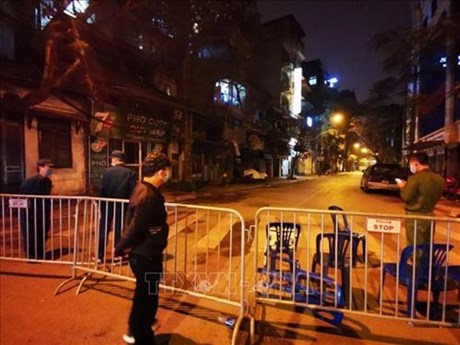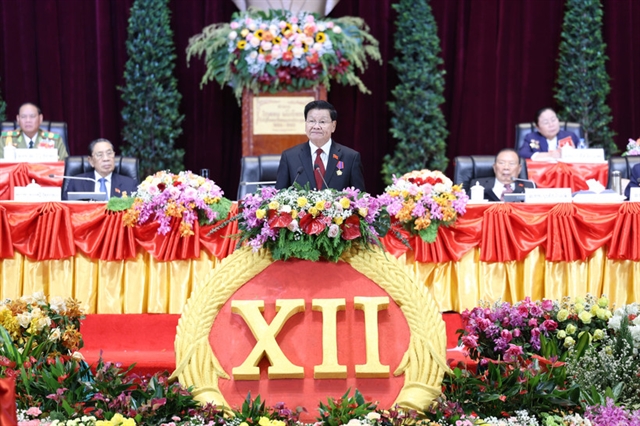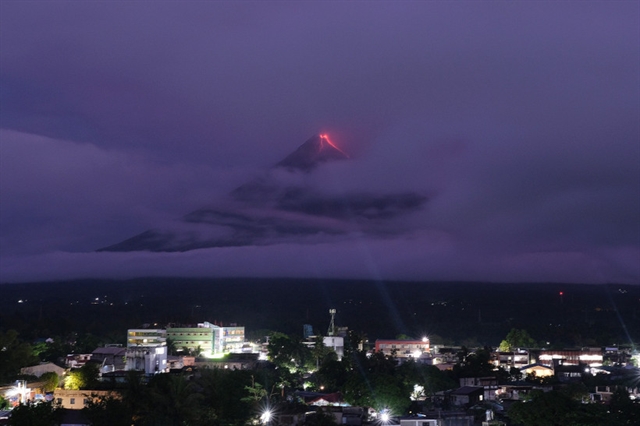 Op-Ed
Op-Ed

The story of the 17th patient infected with SARS-CoV-2 in Việt Nam published on The New Yorker on September 21 has encountered public backlash due to its lack of objectivity.

|
| Trúc Bạch Street was quarantined shortly after the country's 17th COVID-19 patient staying on the street was confirmed. — VNA/VNS Photo Thành Đạt |
HÀ NỘI – While the international community recognises and highly values the COVID-19 prevention and control outcomes in Vietnam, as well as the Government’s efforts to minimise the pandemic’s impact on vulnerable groups, guarantee people’s right to medical treatment, and ensure no one is left behind, the story of the 17th patient infected with SARS-CoV-2 in Việt Nam published on The New Yorker on September 21 has encountered public backlash due to its lack of objectivity.
In an article entitled The Public-Shaming Pandemic of The New Yorker, Patient 17 and her sister were portrayed as victims of public humiliation.
The article wrote about those who accidentally spread the coronavirus and thus faced strong attacks and smearing in the internet.
Commenting on this article, most of Vietnamese internet users expressed their indignation at the wrong and insufficient information about Patient 17 provided in the article.
The statement that “the Vietnamese government, which regularly uses newspaper leaks to persuade or frighten its citizens…” in this article is completely wrong.
On the night of March 6, when learning about the first COVID-19 case in Hà Nội, many people became anxious and frightened. At 10pm on that day, the city’s Steering Committee for COVID-19 Prevention and Control immediately convened an urgent meeting to provide information about this case.
At the meeting, a 26-year-old woman living in Trúc Bạch Ward of Hà Nội’s Ba Đình District was declared the 17th patient positive for the coronavirus SARS-CoV-2. The administration also announced that necessary measures had been carried out to cope with the situation and called on all people to stay calm and not panic. It also made public information about the outbreak’s developments to local residents.
The New Yorker’s report that “Within an hour of articles about the meeting being published, people on the Internet had figured out who Nhung (Patient 17) was and found her social-media accounts” is also not true.
Prior to the urgent meeting at 10pm of March 6, netizens had shared every personal information as well as social-media accounts of Patient 17 though such information had yet to be verified. Even many people having the same name with this woman also suffered from internet users’ criticism as they were mistaken for Patient 17.
Additionally, the article of The New Yorker lacked many important details.
While noting that “One user came across a photograph of a woman who looked like Nhung at the grand opening of a Uniqlo store, and reposted the image on Instagram, announcing to her followers that Nhung was partying while sick,” it did not mention that then Chairman of the Hanoi People’s Committee Nguyễn Đức Chung told the press after the urgent meeting on March 6 that Patient 17 had not attended the opening of the Uniqlo shop in Hà Nội as rumoured.
In addition, Secretary of the municipal Party Committee Vương Đình Huệ also corrected fake news saying that Patient 17 had visited a bar on March 3 falling ill.
Huệ also requested the police force to strictly punish those spreading fake news on the disease. “Cyber security should be controlled more closely. People should follow official information sources from the city, not fake news,” he suggested.
The New Yorker’s article also contained another incorrect detail when saying that “The Vietnamese government, clearly committed to making an example of Nhung, let it be known that when she flew home from London she did not mention her visit to Italy”.
According to the Nội Bài border gate police, Patient 17 had used a British passport to travel to European countries, but she used a Vietnamese passport to enter Việt Nam on March 2.
The Nội Bài border gate police checked each page of her passport carefully, but did not detect any Italian entry-exit stamp. Along with making a false medical declaration, this woman was allowed to enter Việt Nam without quarantine.
In addition, the article only mentioned that her aunt had been infected with the coronavirus from her, without providing additional information that her aunt may not survive if not receiving wholehearted treatment from Vietnamese doctors.
Amidst the dangerous COVID-19 pandemic, Patient 17 still concealed the fact that she had travelled to disease-hit areas in Europe to avoid being quarantined. The consequence of this act is that an entire street with more than 100 residents were quarantined for 14 days and had to receive supplies from the Government, and a private hospital which she came for check-ups was forced to close its door to ensure safety.
Although the right to privacy of each individual needs to be respected, it is not the reason for an individual to cause danger to the entire community. The right to privacy does not mean that social responsibility can be ignored. In addition, in this case, she also violated the law on infectious disease prevention and control.
No matter what the sisters said, the fact is they had been infected with the dangerous virus. Patient 17 was treated successfully by Vietnamese doctors, and she also acknowledged this fact and her family also showed their gratitude.
With an article which reported on Việt Nam’s disease control process in an unconstructive way, The New Yorker ignored a fact that Việt Nam – a middle-income country - has been fighting the disease efficiently despite a lack of resources. The newspaper also forgot differences in culture among nations. VNS




